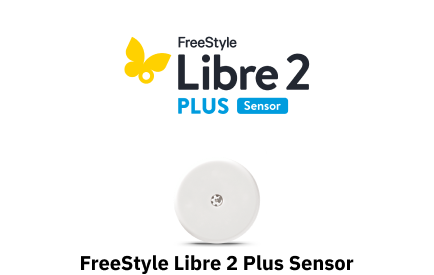Omnipod® 5 and CGM Sensor Integrations


How to get the full experience
In order to get all of the advantages automated insulin delivery (AID) you need a Continuous Glucose Monitor (CGM) sensor. With a CGM connected, your Omnipod 5 can give continuous insulin deliver to help keep you in range, day and night1-2
Works with the leading CGM sensor brands
The Omnipod 5 Automated Insulin Delivery System is integrated with the following CGM sensors:
Benefits of using an integrated sensor
SmartBolus Calculator
The SmartBolus Calculator can suggest a bolus dose based on carb amounts and current sensor trend and value, so you don’t have to.
SmartAdjust™ Technology
To help protect against highs and lows1-2 our algorithm adjusts to your insulin needs every 5 minutes based on readings from your sensor.
Activity Feature
When enabled, this feature reduces insulin delivery for times when glucose typically goes low, like during exercise.
Get started with Omnipod 5
Interested in a complimentary benefits check? Click below to learn more.


Looking for more information?
1. Brown S. et al. Diabetes Care. 2021;44:1630-1640. Prospective pivotal trial in 240 participants with T1D aged 6 - 70 yrs. Study included a 14-day standard therapy (ST) phase followed by a 3-month Omnipod 5 hybrid closed-loop (HCL) phase. Average time in range (70-180mg/dL or 3.9-10 mmol/L) (6AM-12AM) in adults/adolescents and children for standard therapy vs Omnipod 5 = 64.8% vs. 72.5%; 51.5% vs. 64.6%. Average time in range (70-180mg/dL or 3.9-10 mmol/L) in adults/adolescents and children for standard therapy vs Omnipod 5 = 64.3% vs. 78.1%; 55.3% vs. 78.1%. Mean time in hyperglycaemic range (>10.0 mmol/L or >180mg/dL) as measured by CGM in adults/adolescents and children ST vs. 3-mo Omnipod 5: 28.9% vs. 22.8%; 44.8% vs 29.7%, P<0.0001, respectively. Mean time in hypoglycaemic range (<3.9 mmol/L or <70 mg/dL) as measured by CGM in adults/adolescents and children ST vs. 3-mo Omnipod 5: 2.89% vs. 1.32%, P<0.0001; 2.21% vs. 1.78, P=0.8153, respectively.
2. Sherr J. et al. Diabetes Care. 2022; 45:1907-1910. Single-arm multicenter clinical trial in 80 pre-school children (aged 2-5.9 yrs) with T1D. Study included a 14-daystandard therapy (ST) phase followed by a 3-month AID phase with Omnipod 5system. Average time in range (70-180mg/dL or 3.9-10 mmol/L) (6AM-12AM) in standard therapy vs Omnipod 5 = 56.9% vs. 63.7%. Average time in range (70-180mg/dL or 3.9-10 mmol/L) (12AM-6AM) from CGM in standard therapy vs. Omnipod 5 = 58.2% vs 81.0%. Mean time in hyperglycaemic range (>10.0 mmol/L or >180mg/dL) as measured by CGM in children ST vs. 3-mo Omnipod 5: 39.4% vs. 29.5%, P<0.0001, respectively. Mean time in hypoglycaemic range (<3.9 mmol/L or <70 mg/dL) as measured by CGM in children ST vs. 3-mo Omnipod 5: 3.43% vs. 2.46%, P=0.0204.

